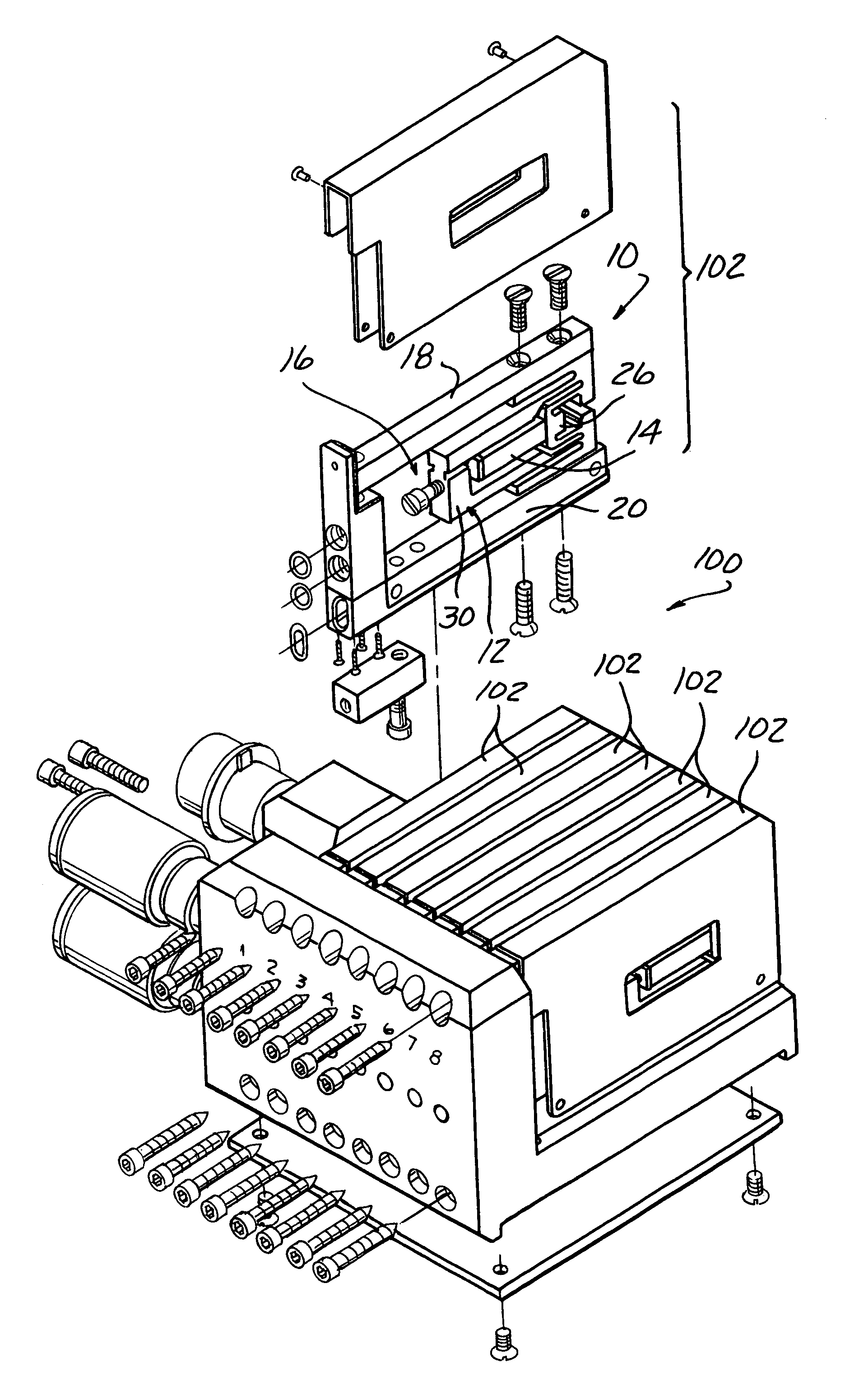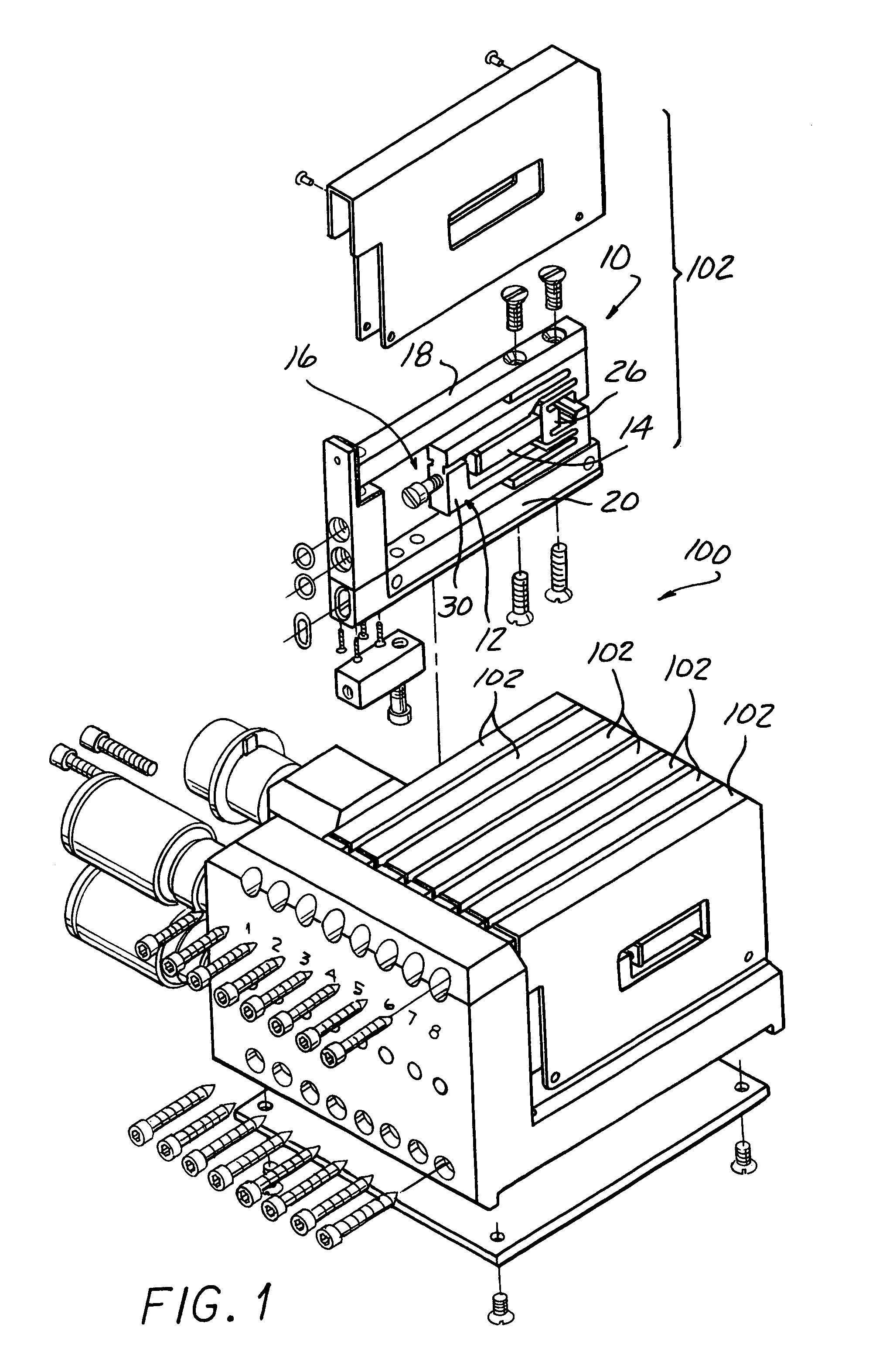Piezo-electric actuated multi-valve manifold
a multi-valve, actuated technology, applied in the direction of valve housing, valve operating means/releasing devices, transportation and packaging, etc., can solve the problems of reduced work capability of the solenoid, extremely difficult control of the valve operation in a predictable linear fashion, and raw electromagnetic field raw power, so as to prevent undesirable flow, save reagent volume, and improve dispensing accuracy
- Summary
- Abstract
- Description
- Claims
- Application Information
AI Technical Summary
Benefits of technology
Problems solved by technology
Method used
Image
Examples
Embodiment Construction
[0022]Referring now to FIGS. 1–3, the present invention includes a multi-valve manifold 100. Each valve 102 in the manifold 100 can be, by way of example and not limitation, 4.2 millimeters (mm) wide by 31 mm tall by 46 mm long. The narrow width of the actuator / valve combinations according to the present invention allows the actuator / valve combinations to be located on the manifold at a center-to-center spacing, or pitch, of 4.5 mm apart from one another in order to provide an advantageous titration tray dispensing embodiment discussed in greater detail below. The 4.2 mm width is believed to be narrower than any other “meso-scale” electrically actuated valve, and therefore unique in the industry. The closest known commercially available solenoid operated valve is 6 mm in diameter. Although electrically actuated valves smaller than 4.5 mm exist, the valves are much smaller, and are based on alternate construction and / or actuation techniques. In general, smaller solenoid based valve d...
PUM
 Login to View More
Login to View More Abstract
Description
Claims
Application Information
 Login to View More
Login to View More - R&D
- Intellectual Property
- Life Sciences
- Materials
- Tech Scout
- Unparalleled Data Quality
- Higher Quality Content
- 60% Fewer Hallucinations
Browse by: Latest US Patents, China's latest patents, Technical Efficacy Thesaurus, Application Domain, Technology Topic, Popular Technical Reports.
© 2025 PatSnap. All rights reserved.Legal|Privacy policy|Modern Slavery Act Transparency Statement|Sitemap|About US| Contact US: help@patsnap.com



